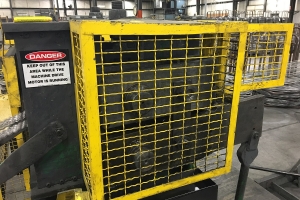I2P2, OSHA and the presidential election
With the economy still struggling and Republicans pointing to excess regulation as one cause, it seems unlikely that OSHA would roll out an ambitious new regulatory approach before the November presidential election. Or is it?
As reported by OH&S magazine, OSHA Director Dr. David Michaels told an ASSE plenary session in Denver that there is a possibility the agency will implement an Injury and Illness Prevention Program (I2P2 for short) before the November election, “but I’m not allowed to say.”
If the agency does so, OSHA could be a very visible issue in the election. Michaels has made no secret that putting I2P2 in place is one of his top goals (and is certainly a top goal of organized labor). The program would transform the regulatory landscape by requiring all companies in OSHA’s jurisdiction to have a safety program. If that was as far as it went, I would be all for it. But OSHA is going several steps further, by specifying requirements that businesses would have to meet in these programs. That is a bad idea, simply because company workplaces vary so much.
In addition, I believe that OSHA may be using I2P2 as a backdoor way to impose the previously failed ergonomics rule-making. With I2P2, OSHA would be able to cite companies who are not following their required safety program for issues such as ergonomics and other alleged recognized hazards where OSHA has no standards.
In fact one might conclude that with I2P2, OSHA could cite issues that would now be covered under its general duty clause (section 5(a)(1) of the OSH act).
One might also conclude that with I2P2, OSHA’s need to conduct rule-making would be greatly reduced. That, of course, would be a terrible scenario for many reasons, not the least of which would be that it would short-circuit the feedback-gathering process that is so important in creating well-crafted rules.
There is significant of opposition among business organizations to I2P2, so OSHA will be facing a battle any time it goes forward with the proposal. Is David Michaels willing to take that on? Is Barack Obama? We’ll see.
Subscribe to Jim Stanley’s OSHA blog and receive regular updates to your mailbox or reader.



1 Comment
Jim:
Your insight is right on the mark on this one. That was a great article.
Having been in safety for 35 years with 12 years with Federal OSHA, the so called “Safety Program” has become something we used to use for training to nothing more than a liability protection document for owners and construction managers on construction sites.
During my work with Federal OSHA I would use the “Safety Program” to document knowledge and even went as far as using it to document “Willful” citations in some instances.
What you have now are organizations like “PICS” and “ISNETWORLD” who require a 700 to 1000 page Safety Program to qualify to work on one of their clients “energy facilities”.
In these instances the safety program is used by the owner to protect an owner’s interest. No real concern on whether it’s used as a training tool for employees.
I’m in the process of reducing our Safety Program from 700 pages to hopefully around 100 to 150 pages.
Let’s be honest…..after 35 years in the safety business a company’s safety program just sits on the shelf and is maybe referenced or copied once a year to send out to an owner somewhere. They have become to big with too much “stuff” in it. We need to go back to the basics and keep the “Program” as a useful tool in a supervisor’s “Safety Kit” on the construction site.
Not much we can do about the energy companies who use PICS or ISN and what all they require in a program at this point. What we can do as an employer is reduce the size of these safety programs and make them a “real” document for our employees and our supervisors to use year round.